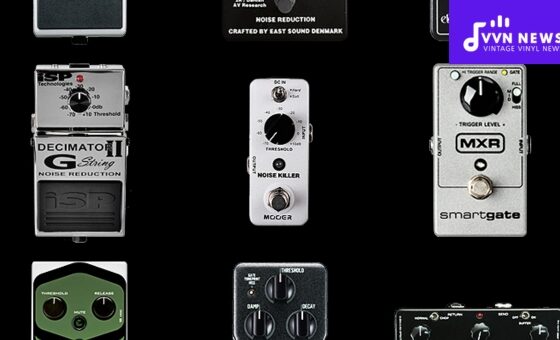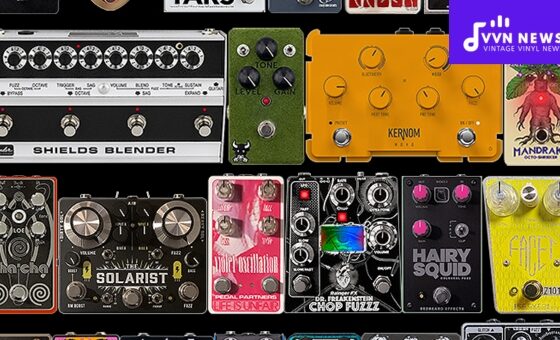Having your home studio is a dream come true for many creative individuals.
After all, it provides an intimate space to unleash your creativity while giving you autonomy over your projects.
To fully maximize this personal haven, there are some home studio essentials you must consider.
Sure, the idea of setting up your own space might seem daunting, especially when thinking about equipment and layout.
With the right information and guidance, you’ll find it an adventure filled with learning and excitement.
This article will walk you through some must-have items to help transform your home studio into a productive incubator of creativity.
What is a Home Recording Studio?

A home recording studio is a dedicated space in your home where you can create and produce high-quality audio recordings.
It serves as your creative hub, allowing you to capture professional-grade sound without the need for expensive studio rentals or travel.
A home recording studio typically consists of essential equipment such as microphones, headphones, audio interfaces, and studio monitors.
In addition to the hardware, you will also need software tools like a digital audio workstation (DAW) to record, edit, and mix your tracks.
The size and complexity of a home recording studio can vary depending on your needs and budget.
Whether you’re a musician working on an album or a podcaster producing engaging content, having a home recording studio offers convenience, flexibility, and control over your creative process.
Having the right equipment and setup in your home recording studio can make all the difference in the quality of your recordings.
It allows you to control factors such as sound isolation, acoustics, and monitoring accuracy to achieve professional-level results.
A well-equipped home recording studio provides endless opportunities for creativity, collaboration, and expression.
With advancements in technology making high-quality equipment more affordable and accessible than ever before, now is the perfect time to set up your home recording studio.
So whether you’re a seasoned professional or just starting on your creative journey, investing in a home recording studio will open up new possibilities for you to explore and share your talent with the world.
Also Read: 14 Best Studio Subwoofers In 2025 [A Top Powerful Sound System]
What are the Benefits of Having a Home Recording Studio?
Having a home recording studio comes with a plethora of benefits for artists and creators.
Whether you’re a musician, podcaster, voiceover artist, or content creator, having your own space to work and create can be incredibly empowering.
Here are some of the major benefits of having a home recording studio:
Convenience and Flexibility
One of the biggest advantages of having a home studio is the convenience it offers.
You have the freedom to work whenever you want, without worrying about booking studio time or adhering to specific schedules.
This flexibility allows you to explore your creative ideas at any time without limitations.
Cost-Effective
Setting up a home recording studio can save you money in the long run. In traditional studios, booking sessions can be expensive, especially if you require multiple sessions for your project.
With a home studio, you have complete control over how much you spend on equipment and can gradually build your setup within your budget.
Creative Control
Having your own space means having complete creative control over every aspect of your recordings.
You get to choose which equipment to use, experiment with different techniques, and fine-tune every detail of your sound without external influences or time constraints.
No Time Constraints
In a professional recording studio environment, time is usually limited due to bookings and deadlines.
Having a home studio allows you the luxury of spending as much time as you need on each project without rushing through it.
Privacy
Working from home means that there are no distractions or interruptions from other artists or clients sharing the same space as in commercial studios.
This privacy allows for uninterrupted creativity and ensures that you can fully focus on achieving the best results for your projects.
Collaborative Opportunities
In addition to working alone in privacy, a home recording studio also opens up opportunities for collaborations with other artists and musicians.
You can invite fellow musicians or vocalists to your home studio, making it easier and more convenient for projects that require multiple talents.
Also Read: 25 Best Condenser Microphones For Pro & Home Studios In 2025
Comfortable Environment
Being able to work in a comfortable and familiar environment enhances productivity and creativity.
Your home studio is a space where you can relax, unwind, and let your creativity flow without any external pressures.
Learning and Skill Development
Having a home recording studio allows you to become familiar with all aspects of audio production.
You can experiment with different recording techniques, learn how to mix and master your tracks and develop valuable skills that will benefit your future projects.
Having a home recording studio provides convenience, flexibility, creative control, privacy, and cost savings.
It allows you to fully immerse yourself in your creative process without time constraints or external pressures, giving you the freedom to produce high-quality recordings at your own pace.
So if you’re serious about pursuing music or any form of audio content creation, investing in a home recording studio is a game-changer that will open up new possibilities for showcasing your talent.
What are the Home Studio Essentials?

When it comes to setting up a home studio, there are several essential items that you need to invest in.
These tools will not only ensure professional-grade audio recordings but also enhance your overall workflow and creativity.
Let’s take a closer look at the must-have essentials for your home studio setup in 2025.
High-Quality Microphone
A high-quality microphone is a crucial component of any home studio setup.
It is responsible for capturing your voice or instruments with clarity and accuracy.
When choosing a microphone, it is important to consider the specific requirements of your recording project.
- Condenser Microphones: Condenser microphones are commonly used in professional studios due to their ability to capture detailed and transparent sound. They are particularly suitable for vocals, acoustic instruments, and studio recording environments with proper acoustic treatment.
- Dynamic Microphones: Dynamic microphones are known for their durability and versatility. They can handle high sound pressure levels and are often used for live performances or recording loud instruments such as drums and electric guitars.
- USB Microphones: USB microphones have gained popularity in recent years due to their convenience and plug-and-play functionality. They are ideal for beginners or those on a budget as they eliminate the need for an audio interface.
Also Read: DIY Studio Desk Plans [Build Your Dream Music Workspace Now]
Studio Headphones
Studio headphones are another essential tool for any home studio setup, ensuring accurate monitoring of your audio recordings.
Here’s what you should consider when selecting studio headphones:
- Closed-Back vs Open-Back: Closed-back headphones provide isolation from external sound sources, making them suitable for tracking and recording purposes. Open-back headphones, on the other hand, offer a more natural sound representation but may leak sound outwards, making them more suitable for mixing tasks.
- Frequency Response: Look for headphones that offer a balanced frequency response without significant coloration. This will allow you to hear an accurate representation of your recordings across the entire frequency spectrum.
Audio Interface
An audio interface serves as the bridge between your microphone or instruments and your computer.
It converts analog signals into digital format, allowing you to record high-quality audio directly into your DAW software.
Here’s what to consider when choosing an audio interface:
- Number of Inputs and Outputs: The number of inputs and outputs you require will depend on the number of microphones or instruments you plan to record simultaneously.
- Sample Rate and Bit Depth: Higher sample rates and bit depths provide better audio quality, but keep in mind that they also require more processing power and storage space.
Studio Monitors
Studio monitors, also known as reference monitors, enable you to hear the nuances of your recordings accurately.
Unlike regular speakers, studio monitors are designed to provide a transparent and flat frequency response. Here’s what to consider when selecting studio monitors:
- Nearfield vs. Midfield: Nearfield monitors are placed close to your listening position and are suitable for small home studios. Midfield monitors are larger and are used in larger studio spaces.
- Frequency Response and Transient Response: Look for monitors that have a wide frequency response range and quick transient response for accurate sound reproduction.
Having covered the importance of a high-quality microphone, studio headphones, audio interface, and studio monitors in your home studio setup, you’re well on your way to creating exceptional audio recordings.
Mic Stand and Pop Filter
A mic stand and pop filter are essential accessories for achieving professional audio recordings in your home studio.
- Mic Stand: A mic stand provides a stable and adjustable platform for positioning your microphone. It allows you to position the microphone at the ideal height and angle, ensuring optimal sound capture. Look for a mic stand that is sturdy, easily adjustable, and compatible with your microphone.
- Pop Filter: A pop filter is a screen or mesh that is placed between the microphone and the performer to minimize plosive sounds. Plosives are strong bursts of air that occur when pronouncing certain sounds like “p” or “b.” A pop filter helps reduce these unwanted sounds from being picked up by the microphone, resulting in cleaner recordings. It also protects the microphone from saliva or spit. Make sure to position the pop filter about 2-3 inches away from the microphone.
Also Read: 19 Best Audio Interfaces For Home & Studio Recording 2025
Acoustic Treatment
Acoustic treatment plays a crucial role in creating a well-balanced and controlled sound environment in your home studio.
It helps minimize sound reflections, echoes, resonances, and unwanted noise interference. Here are some essential elements of acoustic treatment:
- Bass Traps: Bass traps absorb low-frequency sound waves that tend to accumulate in corners and cause boomy or muddy recordings. They come in various shapes, sizes, and materials such as foam panels or fiberglass panels. Place them strategically in corners or along walls where bass buildup is prominent.
- Absorption Panels: Absorption panels are designed to absorb mid-range and high-frequency sound waves to reduce reflections within your recording space. They can be placed on walls, ceilings, or anywhere else where problematic reflections occur.
- Diffusers: Diffusers scatter sound waves in various directions instead of absorbing them outright. They help create a more balanced acoustic environment by reducing flutter echoes without deadening the overall sound.
Creating an effective acoustic treatment plan for your home studio may involve a combination of bass traps, absorption panels, and diffusers.
The specific requirements will vary depending on the size and shape of your room, as well as the type of recordings you intend to make.
MIDI Controller
A MIDI controller is a device that allows you to control virtual instruments and software synthesizers in your DAW.
It typically resembles a keyboard, but there are also drum pads, faders, and other types of MIDI controllers available.
Here’s why having a MIDI controller in your home studio can enhance your workflow:
- Real-Time Expression: A MIDI controller enables you to add expression and dynamics to your virtual instrument performances. You can control parameters such as pitch bend, modulation, volume, and more by simply manipulating the knobs, sliders, or keys on the controller.
- Versatility: With a MIDI controller, you can play various instruments without needing physical counterparts. You can switch between different software-based instruments seamlessly and experiment with different sounds.
- Workflow Efficiency: Using a MIDI controller provides a more intuitive and tactile experience compared to drawing notes with a mouse in your DAW’s piano roll editor. It allows you to capture musical ideas quickly and effortlessly.
There are many options available when it comes to choosing the right MIDI controller for your home studio.
Consider factors such as key count, pad sensitivity, knob count, and integration capabilities with your chosen DAW software.
Studio Desk or Workstation
A dedicated studio desk or workstation plays an important role in creating an organized and ergonomic workspace for your home studio activities.
Here are some considerations when choosing a studio desk:
- Size: Consider the available space in your room and ensure that the desk fits comfortably without cluttering up the area.
- Ergonomics: Look for features such as adjustable height options or monitor stands that allow you to position your equipment at eye level to minimize strain on your neck and back.
- Storage and Cable Management: A studio desk with integrated storage compartments or cable management solutions can help keep your workspace tidy and free from clutter.
Investing in a studio desk or workstation designed specifically for audio production can greatly enhance your workflow efficiency and overall comfort during long recording sessions.
Also Read: Studio Recording and Podcasting [How To Get Started]
Cables and Connectors
Having the right cables and connectors is crucial for connecting your gear in your home studio. Here are a few essential types of cables you may need:
- XLR Cables: XLR cables are balanced cables used to connect microphones, audio interfaces, and studio monitors. They provide high-quality audio transmission while minimizing interference.
- TRS Cables: TRS (Tip-Ring-Sleeve) cables are used for balanced connections between audio interfaces, monitors, headphones, and other devices. They come in various lengths to accommodate the distance between equipment.
- MIDI Cables: MIDI cables transmit MIDI data between your MIDI controller, synthesizers, drum machines, and other MIDI-enabled devices. They allow you to control and trigger sounds from different devices within your setup.
When selecting cables, it’s important to choose high-quality ones that ensure reliable signal transmission and durability.
Look for reputable brands known for their reliability in the industry.
External Hard Drive for Backup
Backing up your work is always important, especially when it comes to large audio files produced in a home studio environment.
An external hard drive provides a reliable method for storing and backing up your recordings securely. Here’s why you should consider investing in one:
- Data Security: Storing your files on an external hard drive offers an additional layer of protection against data loss due to computer malfunctions or hardware failures. It acts as an insurance policy for preserving your valuable recordings.
- Mobility: External hard drives are portable, allowing you to work on different computers or collaborate with others by easily transferring project files from one location to another.
- Storage Capacity: External hard drives come in various sizes, ranging from a few gigabytes to several terabytes. Consider your storage needs and choose a drive that provides ample space for your recordings.
Comfortable Studio Chair
Comfort should not be overlooked when setting up your home studio.
You may be spending long hours recording, editing, and mixing, so having a comfortable studio chair is essential.
Consider the following factors when selecting a chair:
- Ergonomics: Look for chairs that provide proper lumbar support and adjustable features such as seat height, backrest angle, and armrest height. Ergonomic chairs help maintain good posture during extended sessions.
- Padding and Material: Opt for a chair with sufficient padding on the seat and backrest to ensure comfort during long periods of sitting. Additionally, breathable materials such as mesh or fabric can keep you cool during intense recording sessions.
- Durability: Invest in a high-quality chair that is built to withstand constant use without losing its comfort or stability over time. Look for chairs with sturdy construction and durable materials.
A comfortable studio chair not only enhances your overall well-being but also contributes to maintaining focus and productivity throughout your recording sessions.
FAQ About home studio
Can I set up a home studio with limited space?
Yes, you can! There are compact and space-saving options available for home studios, such as small-sized studio monitors and foldable mic stands.
What is the best microphone for a home studio setup?
A condenser microphone like the Audio-Technica AT2020 or the AKG C214 is a popular choice for home studios due to its versatility and ability to capture detailed and crisp audio.
Do I need an audio interface for my home studio?
Yes, an audio interface is essential as it helps convert analog signals from your microphone or instrument into digital signals that can be recorded onto your computer.
Why do I need studio headphones in my setup?
Studio headphones provide accurate sound reproduction, allowing you to hear fine details in your recordings. They also help in isolating external sounds during recording sessions.
How important is acoustic treatment in a home studio?
Acoustic treatment plays a crucial role in ensuring a balanced and accurate sound in your recordings by minimizing unwanted echoes, reflections, and reverberations within your space.
Conclusion
Setting up a home studio has never been more accessible or affordable, thanks to advancements in technology.
By investing in the essential equipment mentioned above, you can create a professional-grade recording environment right from the comfort of your own home.
Remember to choose a high-quality microphone and pair it with studio headphones for accurate monitoring.
An audio interface will serve as the bridge between your microphone and computer, while studio monitors will provide accurate playback.
Acoustic treatment and proper positioning of equipment are essential for achieving optimal sound quality.
Don’t forget to invest in a comfortable studio chair and organize your workstation effectively.
With these home studio essentials, you’ll be well on your way to creating top-notch content in no time.








